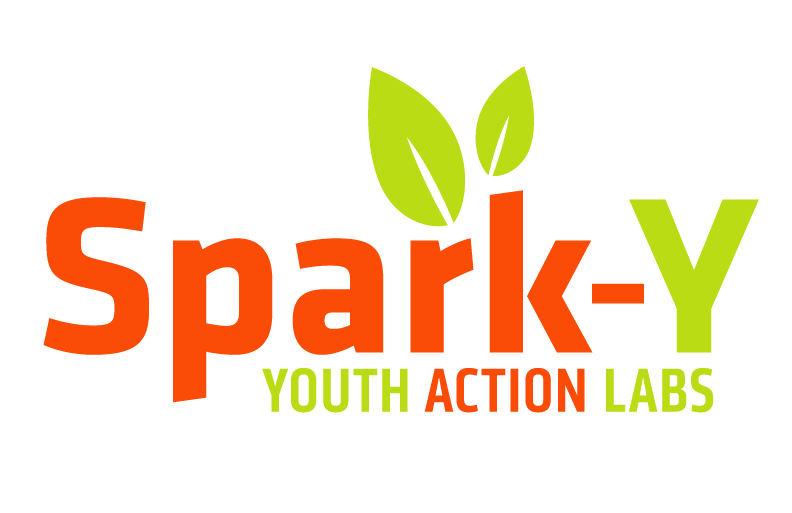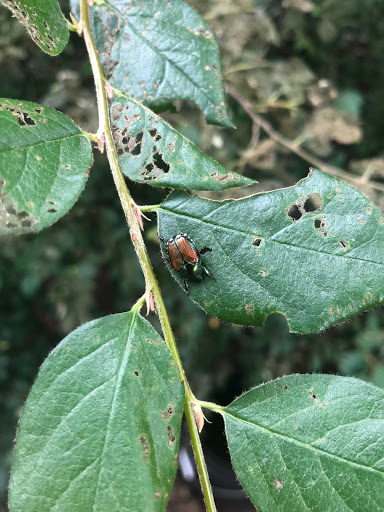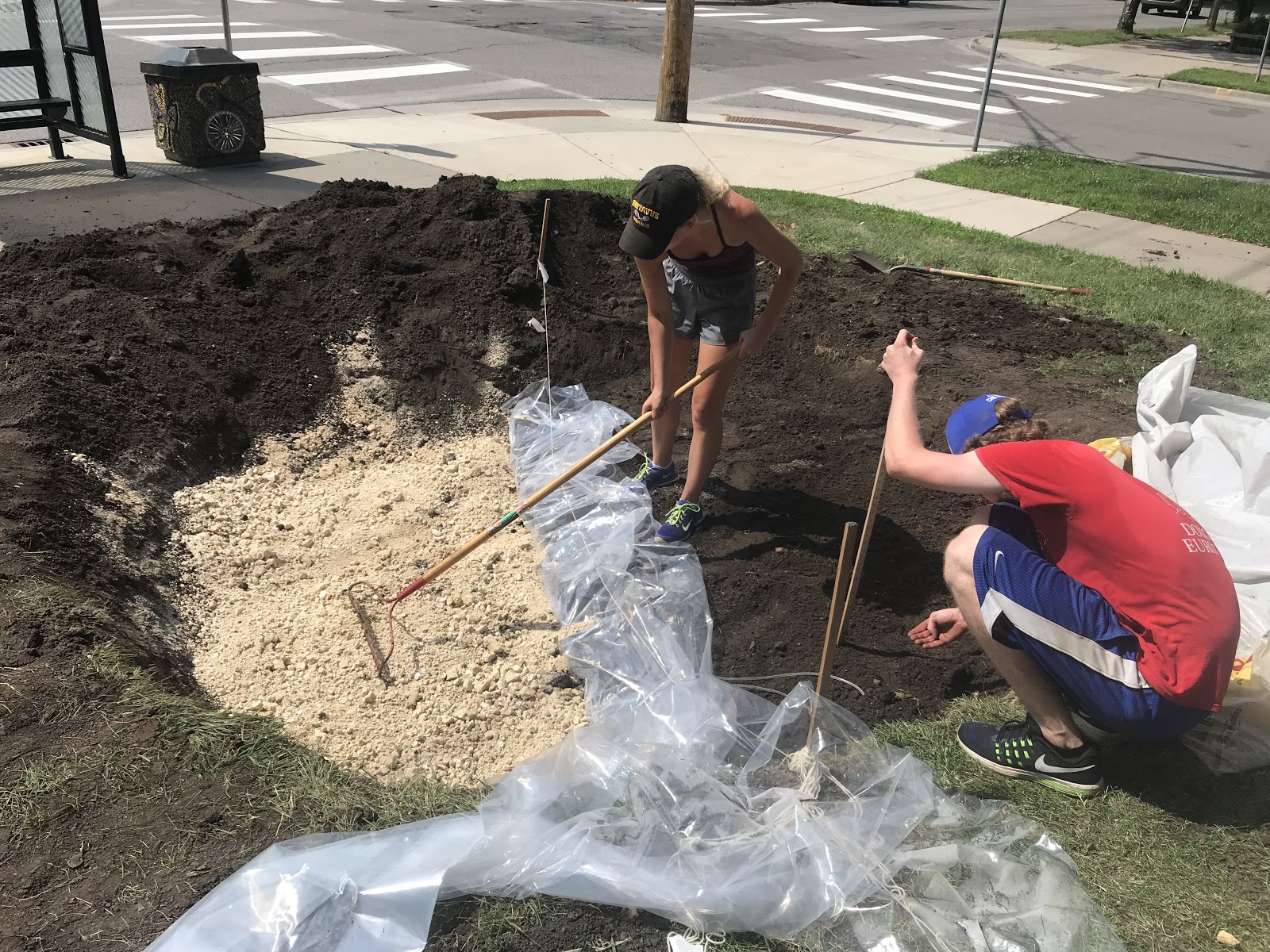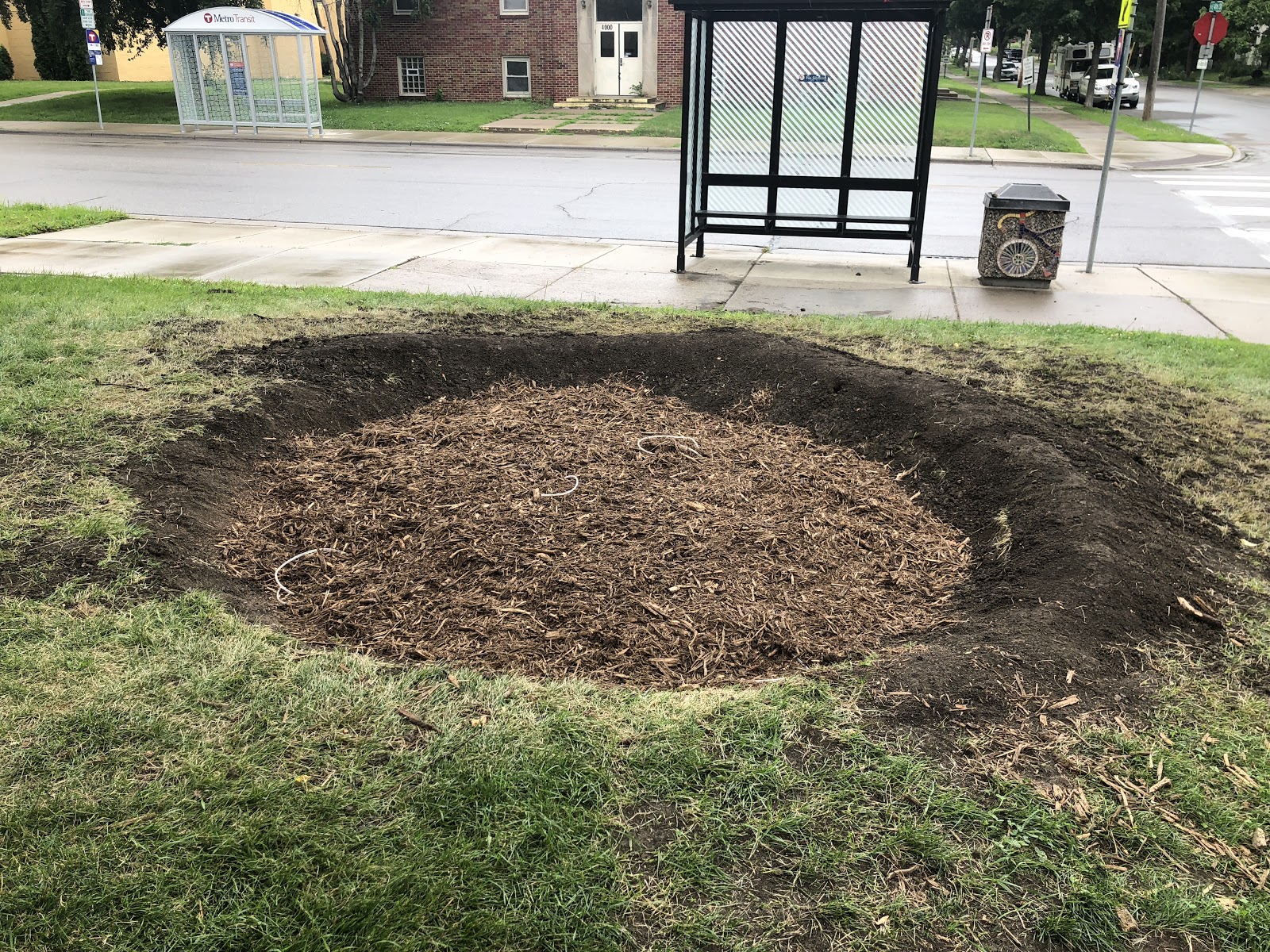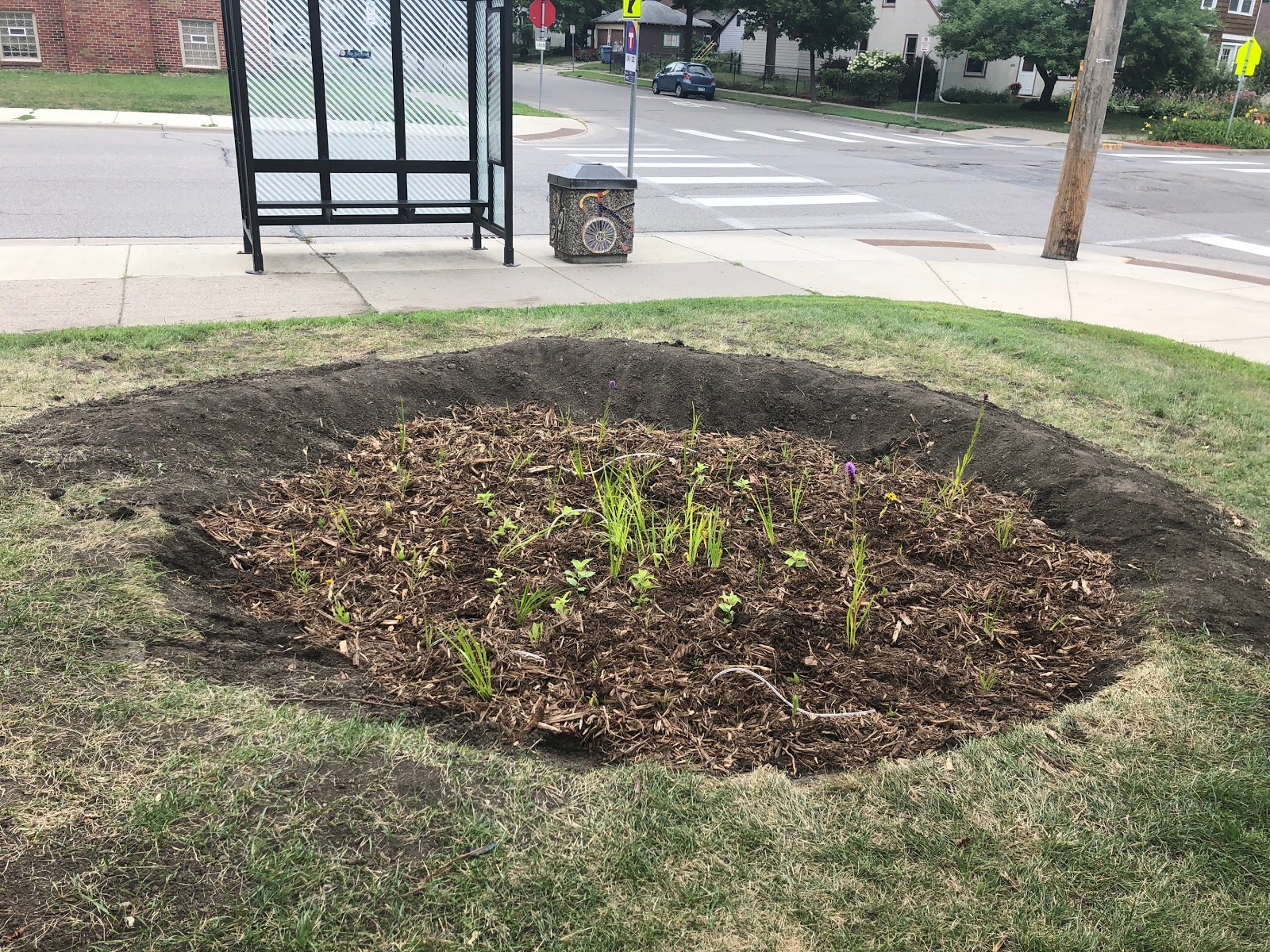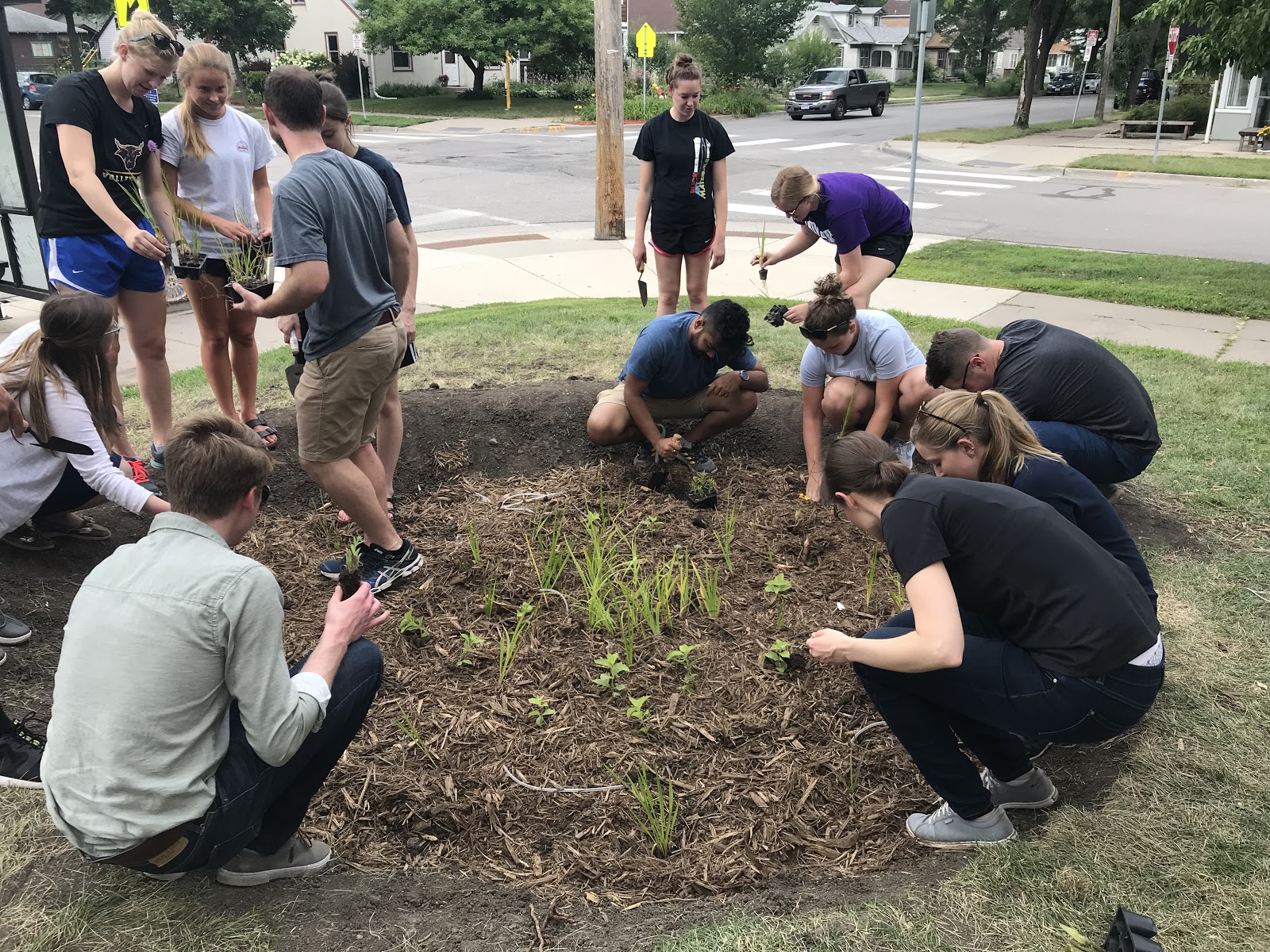The following blog post was written by the Roosevelt Rain Garden Internship team: Zach Bigaoutte, Aidan Cuoco, Miguel Garcia, Amir Sheikhali, Sheila Sullivan, Hannah Wallace, and Davon Washington.
The goal of this internship team was to install a rain garden at Roosevelt High School as well as take care of the many sustainable systems present at the school. This project was funded in thanks to Hennepin County and RBC Wealth Management.
Kicking Grass and Taking Names
One hot summer afternoon six Spark-Y interns embarked on a journey they would never forget. To start the summer these six Spark-Y interns began giving the Roosevelt Urban Farm the much needed love and attention it was so desperately craving, having been neglected since the end of the school year. Being the go-getters we are, we went headfirst into maintaining the farm, greenhouse, aquaponics, vermicompost, hydroponic, piano planter, and turtle planter. Roosevelt is one of the schools in the Twin Cities where the students are able to grow foods in the garden that are used in the cafeteria as a part of the Spark-Y curriculum in their urban farming class. As school is not in session, it was up to us to keep up the good work the students had done during the year. This included weeding the garden, watering the plants, training the bean and cucumber plants to latch to a trellis, and pruning the tomatoes.
One of the biggest pests we dealt with was ridding the gardens of the Japanese beetles, a problem that is prevalent all over Minnesota. These shiny bronze bugs had to be picked off the plants and thrown into a bucket of soapy water to ensure they wouldn’t go back to munching on our produce or attract other beetles due to the pheromones they release on the plants as they eat them! We eventually found the bush where thousands of the bugs were living and went to town picking them off the leaves. To make it fun, we had a little competition amongst us to see who could hold the most beetles in one hand (Sheila won with 30). Along with all these tasks, we had to cut back the sun-artichokes, also known as Jerusalem artichokes. These are tuber plants, so if you try to pull it up and it rips, two more will sprout up, like the head of a Hydra! The sun artichokes had spread over all of the garden so we each took turns cutting them down, resulting in a better looking garden and many bug bites all over Aidan.
Hole-y Water
If that wasn’t hard enough, we also decided to tackle building a rain garden. The goal of rain gardens are to filter out pollutants in water runoff. Rain gardens are built where there is natural irrigation and flow of water already, usually on a hill or slope. In urban settings, runoff is particularly toxic due to chemicals, infrastructure, and general city pollution. This runoff goes right into our drinking water and while we do have facilities to purify water, not every toxin can be eliminated. Rain gardens are a natural, beautiful, and environmentally friendly way to help this process. Another benefit is that we are able to bring in native, perennial plants from Minnesota that also able to provide ecosystem services and bring in pollinators to the garden. While the end result brings so many fantastic benefits, the work was not all sunshine and daisies.
The Journey to the Center of the Earth
This quest started out day one of the internship. We had to call Gopher One, a utility contractor, to make sure the area we were going to excavate was clear of electrical wires and piping. We marked off the area with flags and the company inspected it before giving us the all clear to move ahead. After a heated debate over the true equation for area of a circle (or Zach just being bad at math), we were on our way. We started by taking all the sod off from the hole plot and disposing of it. Next comes the series of unfortunate events. For the slope of the area where the rain garden is, the depth has to be around six inches. So understandably, we dug the six inches. The next day we realized we actually had to dig out nine inches to account for the three inches of mulch we had to add in. At this point we had dug nine inches in total and began leveling it out. By some stroke of luck, we ended this day before putting the mulch in. This would have made our lives a lot more difficult in the long run because the next work day we realized we had to dig even deeper. A lot deeper. Two more feet to be exact!
The additional depth was for research that one of the interns, Hannah, is conducting for the University of St. Thomas. The overview of the study is to compare water leachate of the rain garden between standard condition and a treatment consisting of drinking water residuals (drinking water residuals are a byproduct of water treatment that are found to reduce Phosphorus runoff). This required lysimeters that collect the water to be put in below the normal depth of a rain garden. So we got to digging accompanied by “Dig It”, the theme song for the movie Holes starring Shia Labeouf (fun fact: Shia Labeouf roughly translates to “The Holy Beef”, which we dubbed our groups own personal hashtag). Supplemented by popsicles and lots of water breaks, we dug out the additional feet. We installed the lysimeters and a plastic divider between the two conditions and began to fill the hole up. We got it to the nine inches, leveled it out, and celebrated that small victory. However, our work was far from over.
Post- Hole: A New Era
The hole was filled in and thankfully, we got a long weekend break to relieve our sore hands, backs, arms…. Let’s just say our whole bodies! When we returned we had a few more tasks to complete before we planted the perennials. These jobs included: filling in the hole with mulch, building the berm (a barrier wall made out of dirt to make the lower edge of the rain garden the same height as the top side), and disposing the excess dirt. Filling the hole with mulch was quite easy, it took around 10 minutes to shovel it in and even it out. Building the berm was also not a difficult task as we already had a huge pile of dirt where the berm was to be located, so all we had to do was even it out and make it compact. However, disposing of all of the dirt we didn’t use was a difficult job! It took countless wheelbarrows and three full, giant containers full of dirt to clean up the area. This issue was compounded by the fact that one of the wheelbarrows had a flat tire, making the fifty pound loads even more physically exhausting to push! Luckily, we had zero wheelbarrow spills, like we had on previous work days by half our squad, which was an improvement for us. The dirt had been sitting in that area for around two weeks, with many rainfalls, so we had to rake, scrape, and brush the dirt for hours in an attempt to get as much of it off the grass as possible. Not to toot our own horns, but we did a pretty great job! The grass managed to stay relatively healthy, meaning we won’t have to re-plant it.
Making it Rain- Garden
All of this prep work has led up to the most important day for our internship: the volunteer tour. To help us finish up the rain garden we had a scheduled tour for volunteers to come help us in the farm and plant the rain garden. We had a group of 32 accountants from KPMG come to learn more about all of the cool sustainability features Roosevelt has to offer. We each spoke about a part of the work we have been doing at Roosevelt: Hannah did the intro, Davon showcased the aquaponics, Aidan talked about the vermicompost, Sheila explained the hydroponic, and Miguel and Amir tag-teamed the greenhouse, piano planter, turtle planter, and canoe garden. The accountants were really fascinated by everything we showed them and really seemed to enjoy the aquaponics. After the tour, we led them to the rain garden and as a group, gave them a little spiel about what a rain garden is, how it is environmentally friendly, and which plants we were going to be planting, along with a fun fact about each one (big bluestem grass, broadleaf arrowhead, lake sedge, sweet joe pye weed, prairie blazing star, sweet flag, black eyed susans, butterfly milkweed, marsh marigold, and northern blue flag iris). After this, we split the group into two. We sent half off to the farm to prune plants and do some beetle picking. The other half stayed at the rain garden and began planting. Each group spent 30 minutes at each site before switching. The accountants proved to be very hardworking, helpful, and kind people. We were very happy to get to share our experience with them and show them how special Spark-Y is to us, and to the local community. Because of them we achieved our goal of installing a beautiful rain garden at Roosevelt High School for people and pollinators to enjoy. We hope we “sparked” their interest in sustainability and how little acts of kindness through volunteering and treating the earth with respect can have a huge impact.
The RUF Squad
“Let’s find a way to mention how on budget we are”- Zach, team leader
“When can we go home?” - Miguel
“Those don’t look like donuts”- Hannah, after looking at a bucket of fish
“............”- Davon
“My superpower would be digging holes really fast” - Aidan
“If you eat a lot of marsh marigolds you could get bloody diarrhea and other illnesses” - Amir to the volunteers
“Guys, don’t hold 30 beetles in your hand at one time because then you won’t be able to fall asleep cuz you’ll feel them tickling you even though they aren’t there” - Sheila
